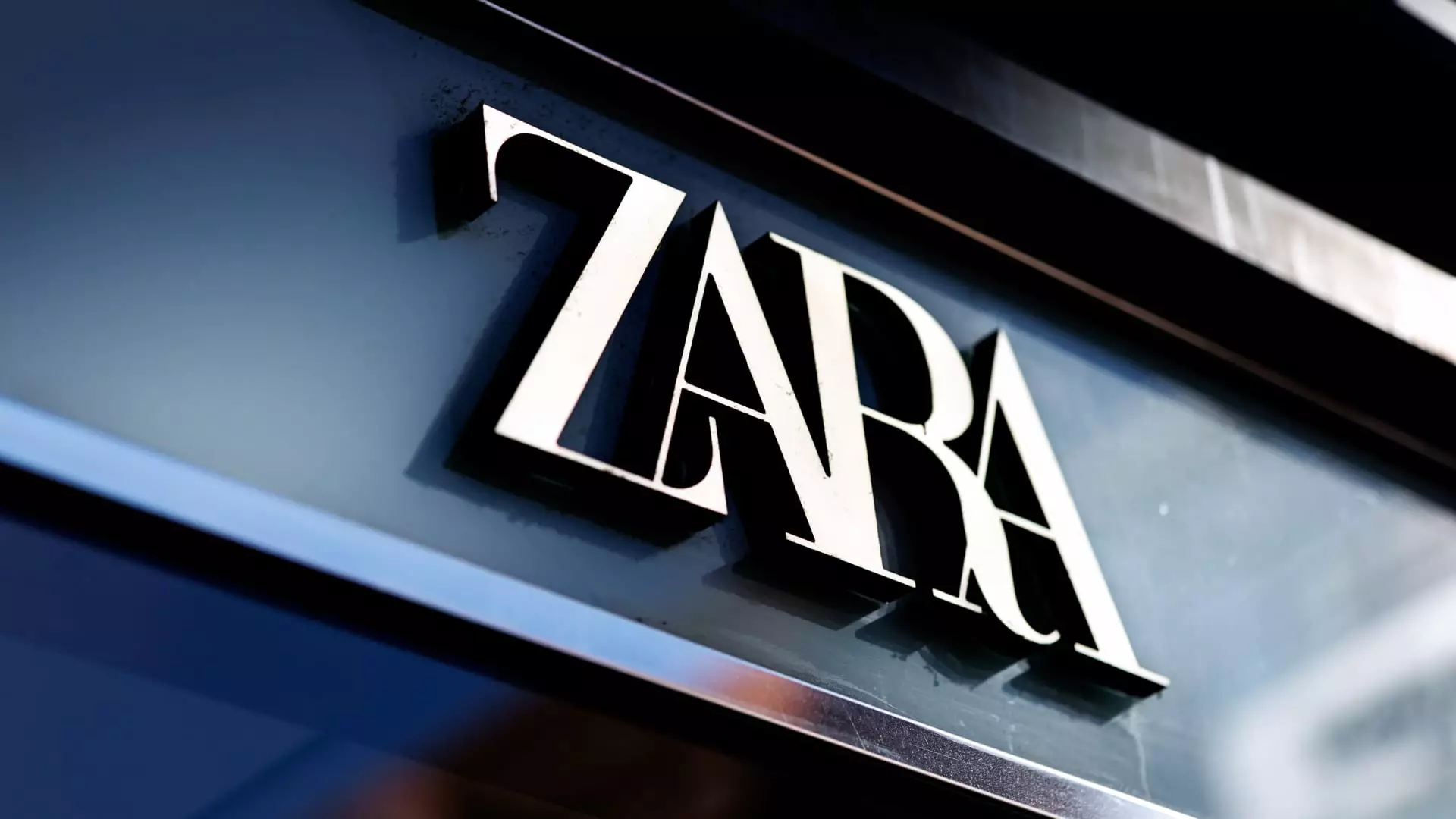In a world where fashion transcends mere clothing, Inditex, the parent company of prominent brands like Zara, has found itself in turbulent waters. Recently, the company’s shares plummeted after it revealed quarterly sales that fell short of market expectations. With revenues of €8.27 billion, the figures were slightly inferior to analysts’ forecasts of €8.39 billion, a deviation that sparked immediate investor reaction. The palpable shift in consumer sentiment is sending alarming signals, particularly as some analysts predicted a clearer trajectory for growth. The reality is that Inditex’s underperformance is indicative of deeper systemic issues in luxury retail and a general slowing of consumer spending.
The Economic Climate’s Shadow
Inditex’s announcement that it experienced a muted start to the summer season is a clear reflection of an increasingly unpredictable economic climate. The 6% sales growth observed from May 1 to June 9 pales in comparison to the impressive 12% growth the company experienced during the same timeframe the previous year. The glaring disparity is not just numbers; it represents waning consumer confidence, a phenomenon that is beginning to permeate the retail sector at large. As Gorka García-Tapia Yturriaga, Inditex’s head of investor relations, aptly noted, “the current environment is difficult to predict.” The implications of these words are troubling, as they suggest that the company, while boasting diversified supply chains and operations in multiple markets, is nonetheless vulnerable to macroeconomic headwinds.
The Duality of Investor Sentiments
As Inditex faces scrutiny, the investment community becomes divided—some bullish advocates still view the brand’s resilience as a hallmark of its enduring legacy, while skeptics ponder if the shining façade is beginning to crack. Mamta Valechha from Quilter Cheviot indicates that the company’s struggles are likely to stir intense conversations regarding its future growth trajectory. For every bull who cites Inditex’s impressive track record, we have bears pointing toward signs of normalization in growth, thereby questioning the sustainability of its valuation. The increasingly complex interplay of these opposing viewpoints paints a picture of a company in crisis, grappling with a narrative that is flipping from one of robust growth to cautious stagnation.
Competition and Consumer Behavior: The New Landscape
The aforementioned dialogue surrounding Inditex does not exist in a vacuum. Competing with brands like H&M and emerging fast fashion disruptors such as Shein, Inditex is facing existential challenges. While it has consistently managed to position itself strategically superior to H&M, the recent performance of its rivals shows that the retail fashion sector is evolving at an alarming rate. The rise of lower-cost alternatives has changed the game, forcing established players to reevaluate their pricing strategies and, consequently, their profit margins. As tariffs on Chinese goods remain high, the complicating factor of increased operational costs threatens to destabilize the very foundation of these companies, pushing consumer behavior towards cheaper alternatives.
A Cautious Outlook
As Inditex marches forward, it must operate under the specter of potential economic instability. The uncertainty around tariffs and the company’s modest forecast are each compelling enough to warrant genuine concern. The fact that the stock is down approximately 12% since last December only emphasizes this precarious position. If the economic landscape continues to evolve unfavorably, the risk of stagnation becomes a real threat—not just for Inditex, but for the entire retail sector. The overarching question remains: can a flagship brand that has long defined fast fashion innovate quick enough to adapt to shifting consumer preferences and economic realities?
The coming months will be pivotal, ripe with opportunity as well as danger. Consumer sentiment will dictate much of what happens next, and as Inditex faces a marketplace that has shifted dramatically beneath its feet, it will have to weigh risks against potential gains carefully. The challenges are steep, but with comprehensive strategies and a commitment to redefining its market approach, the iconic brand may still carve out a path to renewed success in an uncertain future.

